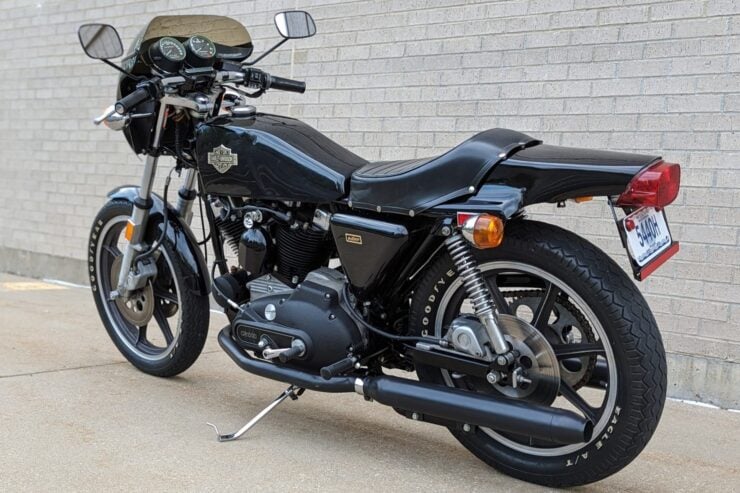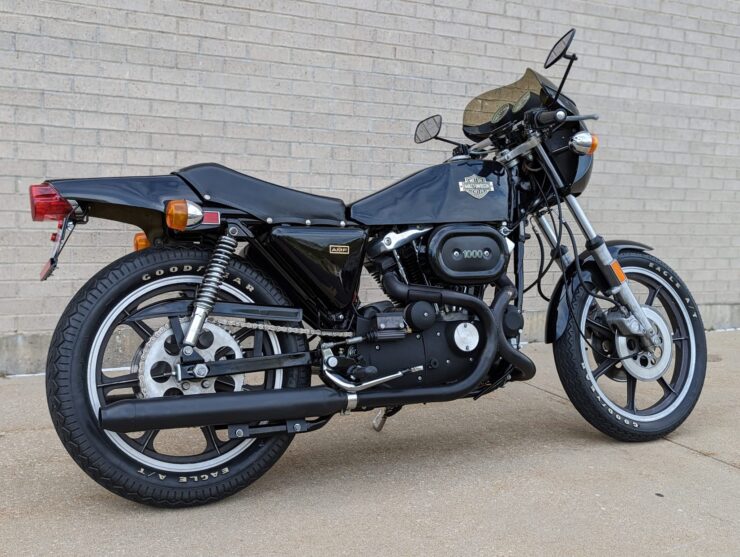The Harley-Davidson XLCR debuted in 1977 as a Sportster-based factory cafe racer. This new model had styling designed to compete with the popular British and European motorcycles of the time, but the American motorcycle buying public seemed largely uninterested in it.
The “CR” in the model name stood for cafe racer, a style of motorcycle that originated in England in the late 1950s and early 1960s. The first cafe racers were modified production motorcycles designed to go as fast as possible, often on a limited budget.


Project Excelsior
It has been said that the Harley-Davidson XLCR Cafe Racer, pronounced “Excelsior,” was developed by Willie G. Davidson as a motorcycle for his own personal use. Willie G. is the son of former Harley-Davidson president William H. Davidson, and the grandson of Harley-Davidson co-founder William A. Davidson, as a result, Harleys have always been in his blood.
The real story is that Willie G. was involved in the design, but it was as part of a team that included Bob Modero, a Harley engineer, and Jim Haubert of Jim Haubert Engineering who was sometimes brought in as an independent Skunkworks-style contractor.
The bike they developed was closely based on the then-current Harley-Davidson Sportster, with which it shared an engine and transmission, and the forward section of its frame. The frame was modified with a new rear section, giving the bike a much more upright look compared to the more reclined Sportsters of the time.
To showcase the model’s sporting intentions it was given triple disc brakes, two up front and one in the rear – a marked improvement over the standard Sportster which still made do with a single disc up front and a drum in the rear despite its significant weight.
A new fuel tank was designed, taking inspiration from the XR750, and the XR750 would also provide the basis of the new swing arm. A headlight fairing was fitted to the front, and the bike was given a distinctly black paint scheme – chrome was minimal and almost everything that could be painted black, was painted black.


The engine was the exact same V-twin from the Sportster, without a higher-performance cam, higher compression pistons, larger valves, or any other internal changes. As a result, the power output is the same with 61 bhp at 6,200 rpm from a displacement of 998cc.
The model was first offered for sale in 1977, Harley-Davidson executives had high hopes that the new “performance” model would siphon off sales from the popular British, German, and Italian motorcycles of the time, but it wasn’t to be.
The price of the Harley-Davidson XLCR put it slightly above the best superbikes from Italy, and it didn’t really have the performance or handling to justify it. Sales were slow right off the bat, and over the course of the three year production run they would make just 1,923 of them.
The 1977 Harley-Davidson XLCR Shown Here
The 1977 Harley-Davidson XLCR is a first year model with just 8,353 miles on the odometer. It had some work done in 2021, this included replacing the air filter, changing the oil, and adjusting the ignition timing, primary chain, and valve tappets. The battery was replaced recently in preparation for the sale.


It’s now being offered on Bring a Trailer out of Shawnee Mission, Kansas. The bike presents very well throughout, likely due to the very low mileage, and it comes with a spare key, an owner’s manual, a parts catalog, and a clean Missouri title in the owner’s name.
If you’d like to read more about this XLCR “Cafe Racer” or place a bid you can visit the listing here. We only rarely see XLCRs this well-looked after coming up for sale, so if you’ve been wanting to pick one up this might be your best option.











Images courtesy of Bring a Trailer

Articles that Ben has written have been covered on CNN, Popular Mechanics, Smithsonian Magazine, Road & Track Magazine, the official Pinterest blog, the official eBay Motors blog, BuzzFeed, Autoweek Magazine, Wired Magazine, Autoblog, Gear Patrol, Jalopnik, The Verge, and many more.
Silodrome was founded by Ben back in 2010, in the years since the site has grown to become a world leader in the alternative and vintage motoring sector, with well over a million monthly readers from around the world and many hundreds of thousands of followers on social media.







